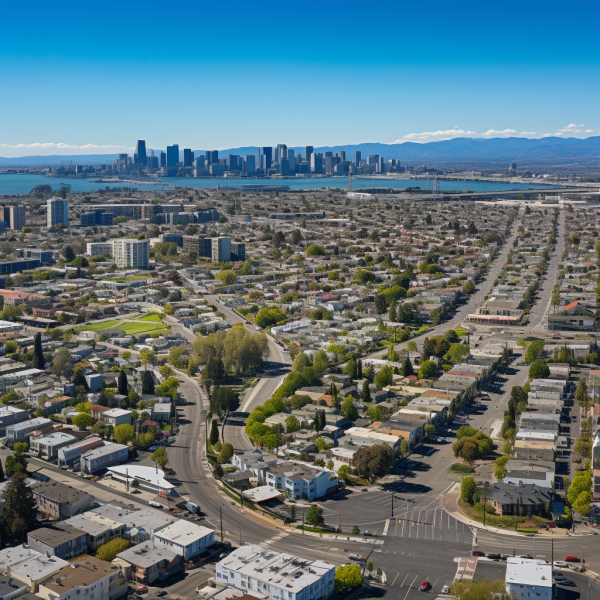Bay Area adds jobs in August, but clear signs of economic slowdown emerge

Recent pace of job gains is dramatically slower than in prior period
Thousands of jobs were added in the Bay Area in August, but there are signs that the region’s economic engine is starting to sputter.
According to the state Employment Development Department, the nine-county region added 3,000 jobs last month, led primarily by strong employment gains in the East Bay, which offset large job losses in the San Francisco-San Mateo region and smaller reductions in the South Bay.
However, some key indicators show that the Bay Area isn’t creating jobs as quickly as it used to.
“The pace of job growth has slowed significantly both statewide and in the Bay Area since 2022 and the first quarter of 2023, and it will continue to slow,” said employment attorney Michael Bernick, a former director of the state EDD.
In August, the East Bay added 3,500 jobs, while the San Francisco-San Mateo metro area shed 1,200 jobs. According to the most recent state employment report, the South Bay lost 500 jobs. Seasonal volatility was factored into all of the figures.
“While recent Bay Area job trends have been disappointing, economists believed we would be in a recession today, which now appears to be a more distant possibility,” said Stephen Levy, director of the Palo Alto-based Center for Continuing Study of the California Economy.
According to seasonally adjusted estimates derived from the EDD report, the Bay Area industries that lost the most jobs were retail, hotels and restaurants, and manufacturing. According to Beacon, small job gains were made by tech companies.
“Combined with downward revisions for the previous month, the data suggests the Bay Area job market is cooling off this summer,” said Jeffrey Michael, executive director of the University of the Pacific’s Stockton-based Center for Business and Policy Research.
The state estimated a month ago that the Bay Area added 3,900 jobs in July. However, according to the report released on Friday, the region will lose 700 jobs.
California added 23,100 jobs in August, while the unemployment rate remained unchanged at 4.6% from the previous month, according to the EDD.
Economists warn that the effects of government efforts to support the economy during the coronavirus outbreak, which caused widespread business shutdowns, may be fading.
“Over the last two years, our job growth has been boosted by enormous federal and state expenditures as well as consumer savings accumulated during the pandemic,” Bernick said. “Expenditures are being cut back, and consumer savings are depleted.”
While employment can fluctuate from month to month, an examination of the pace of job growth over the most recent one-year period reveals a clear shift toward a job slowdown — or even outright job losses — in the Bay Area and throughout California.
In the year that ended in August, the Bay Area added 7,600 jobs per month on average. However, according to this news organization’s analysis of the EDD’s seasonally adjusted figures, the Bay Area added an average of just 4,000 jobs per month during the three most recent months of June, July, and August.
“A tech-heavy economy like ours will always have an ebb and flow,” said Russell Hancock, president of the San Jose-based think tank Joint Venture Silicon Valley. “It’s important to remember that, despite widespread layoffs, our region added jobs over the last year.”
The San Francisco-San Mateo region added an average of 2,300 jobs per month in the year ending in August, but the San Francisco metro area lost an average of 700 jobs per month in the most recent three months. This includes 4,900 job losses in July and 1,200 in August.
During the year that ended in August, the South Bay added an average of 1,900 jobs per month. However, over the last three months, the South Bay added only 1,000 jobs per month on average.
The East Bay has recently emerged as a consistent bright spot for the Bay Area.
Over the one-year period ending in August, the Alameda-Contra Costa County area added an average of 2,500 jobs per month. However, according to this news organization’s analysis, the East has gained 3,200 jobs per month over the last three months.
A significant slowdown in job growth has also begun to emerge across California. California added 27,900 jobs per month on average during the year that ended in August. In stark contrast, over the last three months, California’s economy added only 14,000 jobs per month on average, roughly half the pace of the previous year.
“Our job growth across the region has slowed considerably in recent months as we are no longer benefiting from the service sector’s recovery from the pandemic,” said Jeff Bellisario, executive director of the Bay Area Council Economic Institute.
In another sign of the region’s employment weakness, 2,000 of the 3,000 jobs added in August were in the government sector, with only 1,000 in the private sector. The private sector and its employees generate a diverse range of revenue to fund government operations.
“Most gains are occurring in healthcare, education, and government, which has translated to stronger job growth for the East Bay and inland markets like Sacramento,” said Michael, a Stockton-based economist.
According to Beacon estimates culled from the EDD report, here is how some key industries fared in the Bay Area during August. All of the figures have been adjusted for seasonal variations:
— Retailers cut 1,900 jobs in the Bay Area, including 900 retail jobs in the South Bay, according to Beacon. Retailers also laid off 400 people in the East Bay and 300 in the San Francisco metropolitan area.
— In the Bay Area, 800 jobs were lost in hotels, restaurants, and bars. The San Francisco-San Mateo region saw the most job losses in the hotel and restaurant industry, with 1,700 jobs lost. Sonoma County added 600 hotel and restaurant jobs to help offset the declines.
— Manufacturers cut 800 jobs in the Bay Area, primarily due to the loss of 600 factory jobs in the South Bay.
— According to Beacon estimates, the tech industry added 400 jobs in the Bay Area, despite small job gains. Tech firms added 400 jobs in the South Bay but cut 400 in the San Francisco-San Mateo area. Each of the East Bay, Sonoma, Solano, and Napa counties added 100 tech jobs.
Despite the unsettling trends in the Bay Area job market, Hancock of the Joint Venture group believes the nine-county region, and particularly Silicon Valley, is on solid economic footing.
“Tech is in a transition phase right now, but most regions would be happy to trade places with us,” Hancock explained. “Our fundamentals are sound.”






